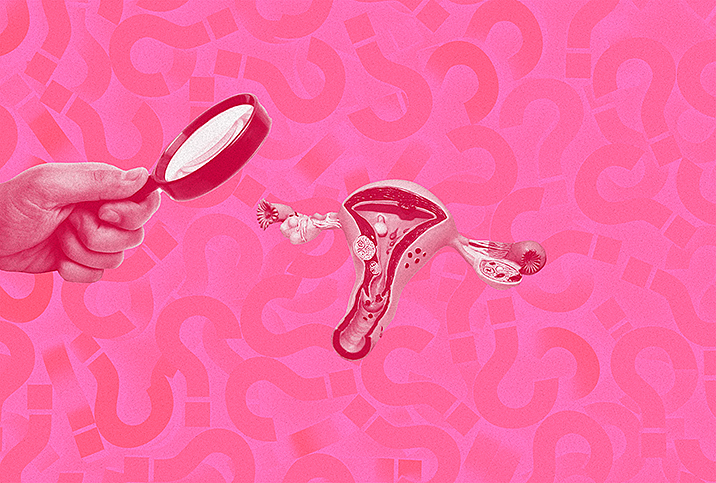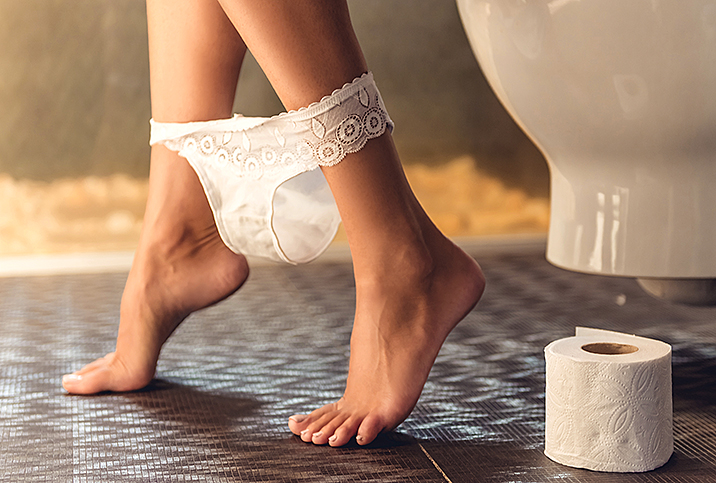Knowing Where to Find Your Cervix Can be a Game-Changer

The cervix is the gatekeeper to female reproduction and plays a critical role in a woman’s reproductive health. It's responsible for key functions, such as protecting the uterus from pathogens entering from the vagina, allowing sperm to ascend to the Fallopian tubes and protecting the fetus during development.
You can find the cervix at the top of the cylindric vaginal canal, at the lowest part of the uterus, where the vaginal wall is connected. The vaginal canal has many ridges and may feel bumpy, whereas the cervix is typically smoother and firmer, similar to the tip of your nose.
The cervix is shaped like a small donut with an opening in the middle. The opening will widen depending on the stage of the menstrual cycle. The height of the cervix in the vaginal canal, its firmness and the wetness of the cervical fluid all change throughout a woman’s menstrual cycle and are indicators of fertility.
The cervix and your cycle
The cervix is similar to a gate that acts to either promote or prevent sperm passage into the fallopian tubes to find the egg. The anatomy of the cervix will change depending on where you are in your menstrual cycle.
Around ovulation, the cervix changes to promote sperm passage into the uterus. The cervix becomes soft and open, the height in the vagina rises and the cervical fluid becomes stretchy and stringy in consistency. All these changes provide an optimal environment for sperm to survive and pass through the cervix.
After ovulation or conception, progesterone increases, causing changes in the cervix that discourage sperm survival. The cervix becomes firm, lower in the vagina, the opening closes and the cervical fluid is reduced, becoming tacky.
Cervix firmness, height in the vagina, opening and wetness can all be monitored when finding and feeling your cervix, giving you clues about where you are in your cycle.
How to find your cervical position
The first thing you will want to do is choose a specific time to check because if you are checking regularly you will want to check at the same time each day for consistency. Some people find the self-exam easier just after a shower. Make sure to trim your fingernails before checking your cervix to avoid any pain and to wash your hands with soap and water to avoid infection.
Next, choose a comfortable position. Squatting is the easiest way for most people to find their cervix, but some people prefer other positions such as sitting on a toilet or putting one leg up on the bathtub. Insert your finger into your vagina. You will know if you are touching your cervix because of the texture. The cervix is round and squishy but firm in contrast to the ridges of the vaginal wall.
Using your finger, measure the height of the cervix. To mark the height, touch the cervix with the tip of your finger and mark where the vaginal opening is on your finger with your thumb. When you remove your finger, your thumb will mark the height of your cervix that day. (Measuring your cervical height when you are menstruating is helpful in choosing a menstrual cup that will work best and most comfortably for your body.)
When your finger is touching your cervix, gauge the firmness, opening and discharge. These are all indicators of different phases of your cycle. If your cervix is soft, high in the vaginal canal, open and there is plenty of cervical fluid, you are likely around ovulation. Don't stress if you feel small bumps on the cervix, this is normal. These bumps are called Nabothian cysts and will typically not need treatment.
Check your cervix each day for a full cycle to learn how your cervix feels during different phases.
Why find your cervical position
Some people find the idea of slipping their fingers into their vagina to find their cervix grossly unnecessary. However, getting to know your cervix gives you a lot of knowledge about your cycle. Armed with this information you will then better understand your current fertility. You can even check your cervix as part of a fertility awareness method. This is useful for both pregnancy achievement and pregnancy prevention.
Besides the obvious benefit of better gauging when you are fertile, checking your cervix allows you to be more body literate, and to take an active role in your reproductive health. You will be able to ask better questions at doctor’s appointments, note cervical abnormalities if they arise and make better decisions for your body. Knowledge is power and by checking your cervix the power is at your fingertips.


















